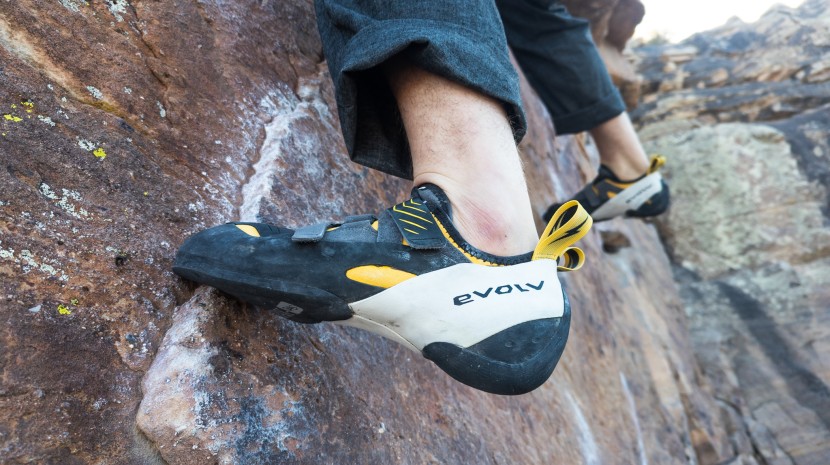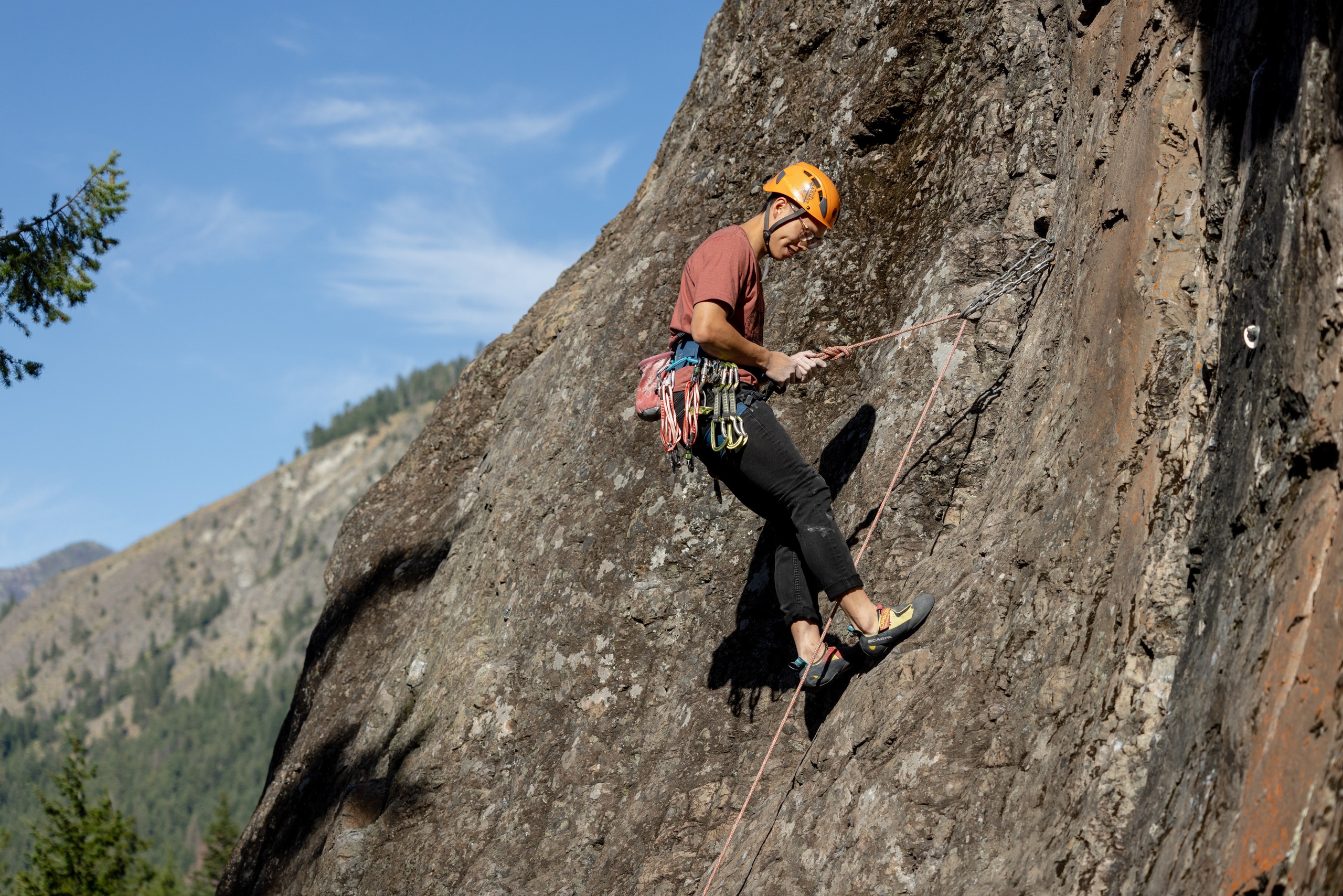Climbing Shoe Evolution: From Beginner to Advanced - When to Upgrade Your Footwear
- Posted on
- Posted in Footwear, Rock Climbing
- 0

In this comprehensive guide, we'll explore the natural progression of climbing shoes throughout a climber's journey, helping you recognize the signs that it's time to level up your footwear game.
As climbers progress from their first tentative steps on the wall to confidently tackling challenging routes, their relationship with climbing shoes evolves dramatically. Understanding when and why to upgrade your climbing footwear is crucial for continued growth and performance.
In this comprehensive guide, we'll explore the natural progression of climbing shoes throughout a climber's journey, helping you recognize the signs that it's time to level up your footwear game.
The Beginner Stage: Comfort First
Your First Pair
When you first step into the world of climbing, your primary concern should be comfort and affordability. As a novice, you're developing fundamental techniques and building strength in muscles you probably didn't know existed. During this phase, the perfect shoe is one that:
- Offers a neutral, flat profile that allows your feet to remain in a natural position
- Provides moderate stiffness for support on larger footholds
- Features thicker rubber for durability as your footwork improves
- Fits comfortably without excessive pain or pressure points
- Has a simple closure system (typically velcro) for easy on/off between climbs
During this stage, focus on climbing shoes designed with beginners in mind. These models typically have more symmetrical shapes and roomier toe boxes that forgive imprecise footwork while you develop technique.
Signs It's Time to Upgrade
You'll know you've outgrown your beginner shoes when:
- You're consistently climbing at an intermediate level (around V2-V3 for bouldering or 5.9-5.10 for sport climbing)
- The rubber is wearing thin, especially at the toe
- You notice a lack of precision when attempting to stand on smaller footholds
- The shoes feel significantly looser than when new, even after tightening
- You find yourself wanting more sensitivity and feedback from the rock
Most climbers spend 6-12 months in their first pair before considering an upgrade. Remember, technical skills and strength development matter far more than equipment at this stage.
The Intermediate Phase: Finding Your Style

Specialization Begins
As your climbing ability advances, you'll start developing preferences for particular climbing styles. This is when specialization in footwear becomes important. Intermediate shoes typically feature:
- Moderate asymmetry that directs power toward the big toe
- Slightly downturned profiles for better performance on steeper terrain
- Enhanced sensitivity with thinner midsoles
- More precise heel cups for secure heel hooks
- Rubber compounds balanced between durability and grip
During this phase, you might want different shoes for different disciplines. Our men's climbing shoes and women's climbing shoes collections offer numerous options tailored to various climbing styles and foot shapes.
Understanding Shoe Construction
At this stage, it's valuable to deepen your understanding of how climbing shoes are designed. Our blog post on Climbing Shoe Anatomy: Understanding Key Design Features That Impact Your Climbing Experience breaks down the technical elements that differentiate various models and how they affect performance.
When to Make the Jump
Consider upgrading from beginner to intermediate shoes when:
- You're projecting routes with smaller, more technical footholds
- Your climbing regularly includes vertical to slightly overhanging terrain
- You notice yourself using more precise footwork techniques like edging and smearing
- You're interested in improving your technical ability on specific types of climbs
- Your feet have strengthened enough to handle a slightly more aggressive shoe
Most climbers transition to intermediate shoes after 1-2 years of consistent climbing, though this timeline varies considerably based on frequency, intensity, and individual progression.
The Advanced Stage: Performance and Precision

Maximum Performance
Advanced climbing shoes are designed with one primary goal: maximum performance on specific terrain. These shoes typically feature:
- Aggressive downturns for exceptional power on steep routes
- High asymmetry for precision on tiny footholds
- Sensitive, thin midsoles for maximum feedback
- Specialized rubber compounds selected for specific rock types
- Sophisticated closure systems for dialed-in fits
To understand how rubber compounds affect performance on different rock types, check out our detailed analysis of How Different Climbing Shoe Compounds Affect Performance on Various Rock Types.
The Multi-Shoe Quiver
At the advanced level, most climbers develop a "quiver" of shoes for different purposes:
- Aggressive performance shoes for challenging projects and competitions
- Moderate all-arounders for training sessions and varied climbing
- Comfortable shoes for warm-ups, all-day multipitch routes, or crack climbing
Each serves a specific purpose, and knowing when to deploy each weapon in your arsenal becomes part of your climbing strategy.
Recognizing the Need for Specialized Tools
You're ready for advanced climbing shoes when:
- You're climbing at higher grades (V5+ bouldering or 5.12+ sport routes)
- Your projects involve specific technical challenges that would benefit from specialized footwear
- You can identify the limitations of your current shoes on particular moves or rock types
- Your foot strength and technique have developed to handle more aggressive profiles
- You're willing to sacrifice some comfort for performance in specific scenarios
Special Considerations for Youth Climbers

For younger climbers, the evolution of climbing shoes follows a somewhat different trajectory. Growing feet require more frequent changes, regardless of skill development. Our kids' climbing shoes are designed with this in mind, offering performance features in sizes that accommodate growing athletes.
Growth vs. Performance
Parents should balance performance needs with practical considerations:
- Allow some room for growth without compromising safety
- Focus on proper fit rather than aggressive features for developing feet
- Consider more frequent upgrades based on growth rather than wear
- Prioritize comfort to encourage continued enjoyment of the sport
Making the Transition: Tips for Upgrading Successfully
Sizing Considerations
As you move through different stages of climbing shoes, sizing considerations change:
- Beginner shoes: Should fit comfortably with minimal dead space
- Intermediate shoes: May require a half-size to full-size down from street shoes
- Advanced shoes: Often sized more aggressively, sometimes 1-2 sizes down from street shoes
Remember that different brands and models have unique sizing characteristics. Always consult sizing charts and, when possible, try before buying.
Breaking In New Models
More advanced shoes typically require more break-in time:
- Wear new shoes for short periods initially
- Use them on easier climbs first to adapt
- Consider using a hairdryer to gently warm synthetic materials for a more custom fit
- Be patient—performance shoes may take several sessions to conform to your feet
When to Retire Old Shoes
Even as you upgrade, your older shoes may retain value in your collection:
- Keep comfortable shoes for warm-ups and long days
- Use older models for gym training to preserve your performance shoes
- Resole favorites when the rubber wears through but the uppers are intact
- Consider having multiple pairs in rotation to extend their collective lifespan
Conclusion: The Right Shoe at the Right Time
The evolution of your climbing shoes should parallel your development as a climber. Rushing into advanced models too soon can hinder progress and cause unnecessary discomfort, while staying in beginner shoes too long might limit your technical advancement.
Remember that the best climbing shoe is not necessarily the most expensive or aggressive—it's the one that suits your current ability level, climbing style, and foot shape. By understanding the natural progression of climbing footwear and recognizing when it's time to upgrade, you'll ensure that your shoes enhance rather than hinder your climbing journey.
Visit our climbing shoes collection to explore options for every stage of your climbing evolution, from your very first pair to specialized performance models for your hardest projects.

Comments
Be the first to comment...